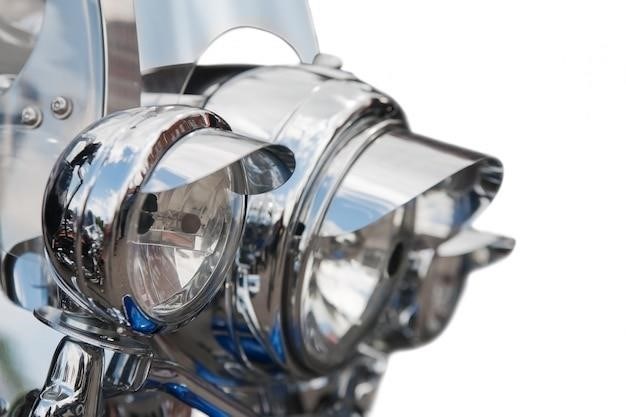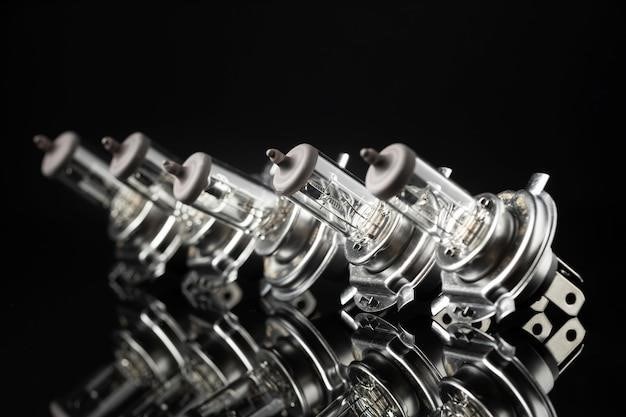Chevy Manual Transmission Issues⁚ A Comprehensive Overview
Chevrolet manual transmissions‚ while offering an engaging driving experience‚ are not without their potential problems․ Reports highlight issues such as gear popping out‚ difficulty shifting‚ and power loss‚ particularly under acceleration or on inclines․ These issues affect various Chevy models and model years‚ demanding careful consideration and proactive maintenance․
Common Problems Across Chevy Models
Several recurring issues plague Chevy manual transmissions across various models․ One prevalent problem is the unexpected popping out of gear‚ often reported at higher speeds or under specific RPM ranges․ Drivers describe this as a sudden loss of drive‚ requiring immediate attention and potentially dangerous in high-speed situations․ This often occurs in fifth gear‚ as noted by several owners․ Another common complaint centers around difficulty shifting gears‚ sometimes accompanied by grinding or unusual noises․ This could indicate worn synchronizers or other internal transmission components requiring repair or replacement․ Furthermore‚ some owners experience a loss of power‚ particularly when accelerating uphill or under load‚ suggesting potential clutch issues or internal transmission problems․
The frequency and severity of these issues vary depending on factors such as driving style‚ vehicle maintenance‚ and overall mileage․ Regular fluid changes and adherence to recommended maintenance schedules can help mitigate some of these problems․ However‚ some issues may be inherent to specific transmission designs or manufacturing flaws‚ necessitating professional diagnosis and repair․ Ignoring these issues can lead to more extensive and costly repairs down the line․ Therefore‚ prompt attention to any unusual transmission behavior is crucial for maintaining vehicle reliability and safety․
Specific Issues in Silverado and Sierra Models
While not as prevalent as in some other Chevy models‚ manual transmission issues have been reported in Silverado and Sierra trucks‚ though the information provided focuses more on automatic transmission problems in these models․ Owners have described shuddering‚ shaking‚ hesitation during acceleration‚ and hard shifts․ These symptoms often appear gradually and might initially be dismissed as minor inconveniences․ However‚ ignoring these early signs can lead to more significant problems later on․ The provided text mentions a technical service bulletin (TSB) addressing ice buildup affecting shifting in older Silverado/Sierra models‚ suggesting that environmental factors can exacerbate existing mechanical issues․ In some cases‚ the problem is traced to worn components within the transmission itself‚ requiring a more extensive and costly repair․
The age and mileage of the truck play a significant role in the likelihood of experiencing transmission problems․ Regular maintenance‚ including timely fluid changes and careful attention to the vehicle’s operating temperature‚ can help prolong the life of the manual transmission and reduce the risk of these issues arising․ However‚ even with meticulous maintenance‚ some Silverado and Sierra owners may still experience unexpected transmission difficulties․ When faced with these issues‚ seeking professional diagnosis is crucial to determine the root cause and select the appropriate repair strategy․ Ignoring the symptoms can lead to catastrophic transmission failure and potentially expensive repairs․
Transmission Problems in Colorado and Canyon Trucks
Chevrolet Colorado and GMC Canyon trucks‚ while generally reliable‚ are not immune to manual transmission problems․ Although the provided text doesn’t detail specific widespread issues with manual transmissions in these models‚ user comments mention occurrences such as a shuddering noise from the rear end‚ potentially indicating a transmission-related problem․ This noise‚ while initially described as not severe‚ highlights the importance of addressing even seemingly minor issues promptly to prevent escalation․ The suggestion of a transmission fluid flush as a potential solution points to the significance of regular maintenance in preventing more significant mechanical failures․ As with other Chevy models‚ neglecting routine maintenance‚ such as fluid changes‚ can lead to premature wear and tear on transmission components․ A prolonged lack of maintenance can result in more extensive and costly repairs down the line․
The text also mentions a Colorado ZR2 owner experiencing a significant transmission problem requiring multiple visits to the dealership for repair․ This example underscores the potential for serious‚ persistent issues to arise even in relatively newer vehicles․ The diversity of problems reported across different model years and usage patterns underlines the need for comprehensive diagnostics when issues are encountered․ Early detection and professional assessment are crucial for identifying the underlying cause and implementing the most effective and cost-efficient repair strategy․ Regular inspections and preventative maintenance are vital steps in preventing major transmission problems in Colorado and Canyon trucks equipped with manual transmissions․
Cruze Manual Transmission Difficulties
The Chevrolet Cruze‚ particularly the models with manual transmissions‚ has seen its share of reported issues․ Owners have described experiencing a noticeable loss of power‚ especially when accelerating uphill or under demanding conditions․ This power loss‚ coupled with a lack of responsiveness‚ suggests potential problems within the transmission system itself or related components․ Some users have reported that the car will only go up to 20 mph even though there are no issues with shifting gears․ This points to a more serious mechanical problem than simply a user error․ In addition to power loss‚ some Cruze owners have mentioned difficulties with the transmission’s ability to shift into gear properly‚ potentially indicating problems with the clutch mechanism or internal transmission components․ The reported issues often occur after reaching a certain mileage‚ suggesting that wear and tear over time might be a contributing factor․ Furthermore‚ error codes such as P1703‚ P1704‚ and P1705‚ related to brake and transmission system problems‚ have been noted‚ indicating electronic malfunctions that could affect the transmission’s operation․
The frequency of these issues necessitates a thorough evaluation of the Cruze’s manual transmission system design and potential weaknesses․ Regular maintenance‚ including timely fluid changes and careful inspection of critical components‚ is essential for mitigating potential problems․ Addressing any problems promptly through professional diagnosis and repair is crucial in avoiding more extensive and costly repairs later․ The varied nature of the reported issues highlights the importance of comprehensive troubleshooting to determine the root cause and implement a suitable solution․ Understanding the specific problem is essential for determining appropriate maintenance schedules and repair strategies for Chevy Cruze manual transmissions․
Troubleshooting and Diagnostics for Manual Transmissions
Troubleshooting Chevy manual transmission problems requires a systematic approach․ Begin by checking the transmission fluid level; low fluid can cause various issues‚ including difficulty shifting․ Inspect the fluid’s condition; burnt or discolored fluid indicates potential internal damage․ Listen carefully for unusual noises during operation; grinding‚ whining‚ or humming sounds often point to specific problems within the transmission․ Pay close attention to the shifting mechanism itself; difficult or hesitant shifting may indicate clutch problems or internal wear․ A visual inspection of the clutch and related components may also reveal issues․ If the problem is intermittent‚ attempt to replicate the issue under controlled conditions to gather more information for diagnosis․ If the issues are related to sensors‚ diagnostic trouble codes (DTCs) can be retrieved using an OBD-II scanner‚ providing valuable insights into the electronic aspects of the transmission control system․ Remember that some problems‚ like a cracked clutch housing‚ may require specialized tools and expertise to identify․
Once potential problems are identified‚ a qualified mechanic should perform a thorough diagnosis․ This may involve road testing‚ functional tests of the various transmission components‚ and potentially disassembling the transmission for a complete internal inspection․ The mechanic can then provide an accurate assessment of the problem’s severity and recommend the necessary repairs or replacements․ Ignoring early warning signs or attempting complex repairs without sufficient mechanical knowledge can lead to more extensive damage and higher repair costs․ A professional diagnosis is key to ensuring your Chevy manual transmission operates smoothly and reliably for years to come․ Proactive maintenance and prompt attention to any problems are essential for preserving the longevity of the transmission․

Maintaining Your Chevy Manual Transmission
Proactive maintenance is crucial for a long-lasting Chevy manual transmission․ Regular fluid changes using the recommended lubricant are essential․ Early identification and addressing of any problems prevent costly repairs․ Professional service ensures optimal performance and extends the transmission’s lifespan․
Regular Fluid Changes and Maintenance
Regular transmission fluid changes are paramount for maintaining the health of your Chevy manual transmission․ The frequency of these changes depends on factors such as driving conditions and the vehicle’s age․ Consult your owner’s manual for the manufacturer’s recommended schedule‚ but generally‚ a change every 30‚000 to 60‚000 miles is a good starting point․ Using the correct type of transmission fluid is critical; using the wrong fluid can lead to premature wear and damage․ Always refer to your owner’s manual to identify the specified fluid type for your specific Chevy model and year․ Beyond fluid changes‚ regular inspections of the transmission’s external components are recommended․ Check for leaks‚ unusual noises‚ or any signs of damage․ Addressing these issues early can prevent more serious‚ and expensive‚ problems down the line․ Additionally‚ ensure that the clutch is properly adjusted and that the linkage is free of any binding or damage․ A properly functioning clutch is essential for smooth shifting and prevents undue stress on the transmission․ Neglecting regular maintenance significantly increases the risk of costly repairs or even premature transmission failure․ A well-maintained manual transmission will offer years of reliable performance and driving enjoyment․
Identifying and Addressing Transmission Problems Early
Early detection of Chevy manual transmission problems is crucial to prevent major repairs․ Pay close attention to any unusual noises emanating from the transmission‚ such as grinding‚ whining‚ or humming sounds․ These sounds often indicate worn components or insufficient lubrication․ Difficulty shifting gears‚ requiring excessive force or resulting in a grinding sensation‚ is another significant warning sign․ Similarly‚ a noticeable lack of power or hesitation during acceleration could indicate internal transmission issues․ Leaks around the transmission case are also cause for immediate concern‚ potentially signaling a failing seal or gasket․ Observe the transmission fluid itself; a burnt smell or discoloration suggests overheating or degradation․ If you notice any of these symptoms‚ do not delay seeking professional attention․ Ignoring these early warning signs can lead to more extensive damage and significantly higher repair costs․ A prompt diagnosis can often pinpoint the problem and allow for timely intervention‚ often involving a relatively simple repair․ Regular maintenance and careful attention to the transmission’s performance will contribute to its longevity and prevent costly surprises․

Recommended Fluids and Lubricants
Selecting the appropriate transmission fluid is paramount for optimal Chevy manual transmission performance and longevity․ Consulting your owner’s manual is the first and most crucial step; it specifies the exact type and grade of fluid recommended by the manufacturer for your specific vehicle and transmission․ Using the wrong fluid can lead to premature wear‚ damage to internal components‚ and ultimately‚ transmission failure․ While many readily available fluids meet general industry standards‚ only those explicitly recommended for your Chevy model should be used to ensure compatibility and performance․ Synthetic manual transmission fluids often offer enhanced protection against wear and tear‚ improved performance at extreme temperatures‚ and extended service intervals․ However‚ always adhere to the manufacturer’s specifications․ Beyond the transmission fluid itself‚ regular lubrication of external components‚ such as shift linkages and cables‚ is also important․ Using a high-quality‚ multi-purpose grease will contribute to smooth shifting and prevent premature wear in these critical areas․ Always use the correct amount of lubricant and follow the manufacturer’s instructions for application to prevent potential issues like excessive grease build-up‚ which can lead to its own set of problems․
Professional Repair and Service Options
When facing complex Chevy manual transmission issues beyond simple fluid changes or lubrication‚ seeking professional assistance is crucial․ A qualified mechanic specializing in transmissions possesses the expertise and specialized tools necessary for accurate diagnosis and effective repair․ Ignoring problems can lead to escalating damage and significantly higher repair costs․ Choosing a reputable repair shop is vital; look for shops with experience working on Chevy vehicles and positive customer reviews․ Before committing to repairs‚ obtain multiple quotes to compare pricing and services offered․ Inquire about warranties on parts and labor to safeguard your investment․ During the repair process‚ maintain open communication with the mechanic․ Ask questions about the diagnosis‚ the proposed repair plan‚ and the estimated completion time․ A thorough understanding of the issue and the repair process allows for informed decision-making and ensures you’re receiving the best possible service․ Remember‚ preventative maintenance‚ as outlined in your owner’s manual‚ can significantly reduce the likelihood of needing extensive and costly repairs in the future․ Prioritizing regular service intervals and addressing minor issues promptly can extend your transmission’s lifespan and save you money in the long run․
